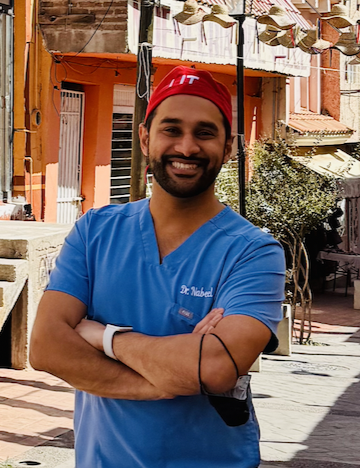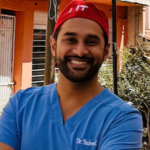
drcajee
Study Club MemberForum Replies Created
-
drcajee
MemberFebruary 9, 2025 at 8:08 am in reply to: Creation of lateral window for sinus augmentationLateral window sinus lifts are indicated when there’s 3 mm or less of residual bone height. In this case, you may still be able to go intracrestal for these lifts.
However, yes, if you do have a bony window you can leave it attached to the membrane when you elevate. It’s basically added bone graft!
I haven’t used those kits so I couldn’t tell you. My experience with lateral window has always been with the use of a round bur or piezo.
-
In this case, it looks like a minimal sinus augmentation is needed. There is a technique you can consider for this clinical scenario called a ‘sinus implosion’. For this technique, you drill your osteotomy just shy of the sinus floor cortex and then you place your implant fracturing the sinus floor into the sinus. So it often looks like drill 6 mm and you place an 8 mm Implant.
-
Since she’s paused her Prolia, it’s generally a good idea to remove the tooth soon after that to avoid complications. But definitely recommend checking in with her managing physician to make sure everyone’s on the same page about timing and any other precautions. This way, we can ensure a smooth process for her!
-
When it comes to bone grafting, there are a few options like demineralized bone allograft (DBA), freeze-dried bone allograft (FDBA), and synthetic calcium phosphate (like Augma Bondapatite).
– DBA: This is human bone that’s had the minerals taken out, which makes it great for bone growth because may actually help recruit your body’s own cells to form new bone (that’s called osteoinductive).
– FDBA: This one keeps the minerals but is freeze-dried. It provides a good scaffold for bone to grow on (osteoconductive) but doesn’t actively encourage new bone to form.
– Synthetic Calcium Phosphate: This is man-made and also mostly osteoconductive, providing a framework for bone growth without the risk of disease transmission from human sources.
Before deciding on a graft, it’s a good idea to do a pre-radiographic assessment to see if grafting is even needed. This way, we can determine the best approach for the patient. I often lean to not grafting in patients with questionable bone healing issues.
-
Regarding use PRF for B/MRONJ – not enough data out there to call that standard of care. https://pmc.ncbi.nlm.nih.gov/articles/PMC8140838/
pmc.ncbi.nlm.nih.gov
Dentoalveolar surgery is probably the major risk factor for MRONJ and for other complications following a tooth extraction, especially in patients affected by systemic diseases. The aim of this retrospective study is to evaluate whether a PRF plug ...
-
-
When I look at this case, you have enough bone to secure your implant. Regarding the vertical deficiency, I wouldn’t be too concerned as long as the Implant prosthesis has enough tissue support. If it doesn’t, I would consider a connective tissue graft and custom healing abutment.
-
This reply was modified 11 months ago by
 drcajee.
drcajee.
-
This reply was modified 11 months ago by


